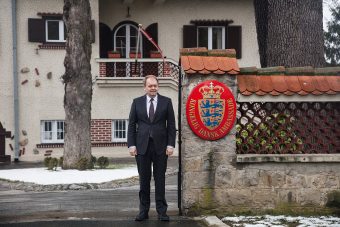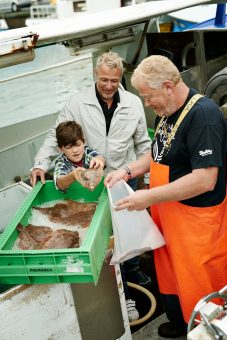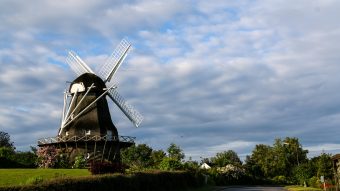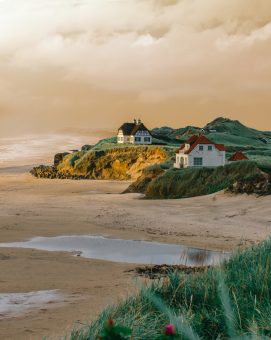
The country of well-being, the oldest monarchy in Europe and the country with the happiest inhabitants, the birthplace of LEGO bricks, “hygge” lifestyle and famous fairy-tale writer Hans Christian Andersen – we can try to find the most picturesque proposition that would summarize the description in a few words but that would still partially reflect the success of his Nordic country. The basic prosperity of Denmark is primarily social balance, high level of trust in the state, strong cooperation between the public and private sector, extremely low level of corruption, as well as free health care and education.
In addition, Denmark is making efforts to create a “green” and sustainable society that will achieve the goal of draining entire energy from renewable energy sources by 2050. According to the Environmental Management Index (EPI) for 2018 this country is in the third place, and its citizens consider that environmental protection is their civilizational obligation. Hence, it does not surprise the fact that the number of bikes in Denmark exceeds the number of inhabitants. In an interview with the Danish ambassador in Serbia, Anders Christian Hougård, we found out which measures have the Danes taken to find themselves in such a high position, and also which projects the Danish Embassy has carried out in Serbia so far and in which areas we could still cooperate in order to ensure a higher rate of economic growth in our country.

EP: According to the EPI ranking for this year Denmark has taken the third place, which is desirable for most countries and a fairly unattainable position. However, if we were to take only fishery and forestry into account, the status of Denmark would be somewhat different. What has your country taken so far to prevent losses in forested areas as well as in fish and shell stocks in the Baltic Sea?
Anders Hougård: Our ranking in the field of the fishery is a consequence of the continuous and rapid decline of fish stocks. This is a matter of great importance to us, especially because the fishery is a very important industry in our country which has a great export value. The Danish Fisheries Agency is in charge of regulating commercial fisheries, and the agency’s ambition is to support growth through a green transition. Funds are provided through the European Fisheries Fund for the development of sustainable fisheries and aquaculture, and at the same time inspections are performed to ensure that the fish stocks in the Danish sea waters are sustained. In the Baltic Sea, fish stocks and nature are particularly vulnerable, as many different countries are bordering, and risks of pollution and over-fishing are therefore high.

Concerning forest management, the Danish government is planning to cover additional 10.000 hectares with trees and to make a nature reserve of untouched forest. Furthermore, 3.300 hectares will be laid out as protected biodiversity, and when the whole project is completed, the total protected forest and biodiversity in Denmark will be more than doubled compared with today. As such, this will substantially reduce tree cover loss and improve diversity in nature to the benefit of the forest industry, as well as outdoor recreation. Compared to international standards, Danish forestry is overall healthy and sustainable, but over the last many years increased industrialization and the lack of focus on preserving forests and ecosystems have put Danish forests at risk.
EP: Does the Danish government run any campaign on the importance of preserving the environment or it seems redundant now after decades of attentive implementation of conservation and nature policy?
Anders Hougård: The promotion of the green agenda is a never-ending process. It is important to keep the education ongoing and that it involves everyone in the society, from small children to seniors. The current Danish government is putting in a great effort in promoting their green agenda these days. They have proclaimed themselves the greenest government in the history of Denmark. For the big part of the Danish population, a green agenda is at the top of the list, and more people are becoming aware of the crucial necessity of protecting the environment. Additionally, there is a widespread political consensus on the green issues, so even if the parties in the Government change, the overall course will not change. The investments in civil society for sustainable energy transition should reflect on easier negotiations and subsequent completion of relevant EU chapters, and in particular Chapter 27.

EP: Your country provides many good examples of how to protect the natural environment. What is the key approach to keeping the economic growth and the nature safe?
Anders Hougård: The development and execution of policies have been focused on the synergy of nature protection and economic growth for many years now. A major part in it is planning and communicating these policies to the public and with the business sector. We came to an understanding that environmental protection can also create new job opportunities and new innovative companies which contribute to our economic growth.

For example, by implementing policies for wastewater treatments, we have not only contributed to saving the nature and waterways but also created new jobs in construction, operation, and maintenance of such facilities. The decision to protect waters has therefore created jobs and economic growth which go hand in hand. The same principle can be applied to renewable energy, energy efficiency, the introduction of processing industry standards, and soon. However, it has all started with a decision and dialogue to aim for a cleaner and healthier environment.
EP: How did your country achieve harmonious arrangement between nature conservation and keeping the land usable for human purposes?
Anders Hougård: The keyword here is urban and environmental planning. This topic has been high on political agenda for many decades and it is a subject of many ongoing discussions on how to achieve the best balance between, primarily, agriculture and nature conservation. This debate topic was set many years ago, and its purpose is only to find a variety of ways to achieve that goal. It is important to keep an open mind for solutions which have come about during the decades of trying to reach the harmony between nature and the use of land for human needs.
Read the whole interview in the new issue of the Energy portal Magazine on SUSTAINABLE ARCHITECTURE, July 2018.
Interview by: Nevena Djukic and Tamara Zjacic



